Not all computers were created equal. Some were made for education, others for gaming, and IBM PC was designed for business. In 1981, the 5150 was introduced, the first model of what would become the ubiquitous architecture that we have all used. Its sound capabilities were mostly harmless.
However, over time, these computers swept everything aside. During their peak, Macintosh computers were a minority, and both the Amiga and Atari ST faded away. How did they fare in terms of sound to compete with them? It was the era of sound cards for PCs and compatibles.
The first PC was a modest computer. Its features were no better than, for instance, a Commodore 64, but it was correctly oriented towards business: a high-quality keyboard and monitor, a relatively open architecture, a decent microprocessor, and extensive documentation about its BIOS, which was replicated by third parties to the chagrin of the blue giant. These and many other debated details greatly contributed to its popularization, but that’s another story.
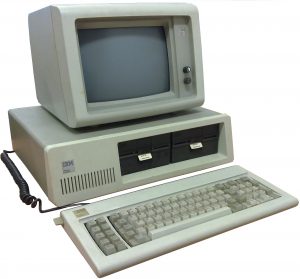
In this article, I will try to provide an overview of how sound evolved in PCs, what hardware was behind it, and of course, how it impacted the world of video games through the golden age of the PC and its omnipresent MS-DOS. For now, I am not familiar enough with the MSX world, for example, to expand to other platforms, but I hope that in the future I will hit the jackpot and have plenty of time to do so. However, I will attempt to explain the jargon and terms used to make the text intelligible. I promise to be brief.
The Beep, or PC Speaker
All we had in the standard PC regarding sound is what accompanied the first model, simply called the PC Speaker. It is a small two-and-a-quarter-inch speaker mounted on the machine chassis. An element that has remained in PC motherboards even today, being replaced by a less cumbersome piezoelectric buzzer.
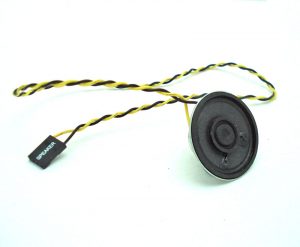
The operation of a magnetic membrane speaker is well known: analog sound, transmitted via an electrical current, acts on an electromagnet that moves a magnetic membrane. The vibrations of this membrane, transmitted as pressure waves in the air, constitute the sounds we can hear.
Piezoelectric speakers are somewhat more interesting: they utilize the ability of certain crystals to vibrate in response to the electric current passing through them to directly generate pressure waves in the air. This allows them to be miniaturized to the maximum and made very cheap, though, of course, at the expense of having very poor sound quality. In any case, it is adequate for the characteristics of the PC Speaker.
But enough of Beakman’s World. Returning to our topic, the technical characteristics of the PC Speaker sound are really poor: it can only emit a 1-bit square wave signal with an arbitrary frequency. That is, just beeps at full volume with the frequency we want, which leaves us bare compared to almost any other system.
The PC Speaker operation is also simple. The controller is an Intel 8253, a programmable timer that controls the speaker voltage. The computer simply tells it when to beep and when to stop, communicating with it at 105⁄88 MHz. This strange figure was because it corresponds to one-third of the NTSC color burst frequency, and divided by the largest integer of 16 bits corresponds to the frequency of MS-DOS software interrupts. How wonderful! Right?
In the early 90s, a technique called Pulse Width Modulation (PWM) was used to obtain digital sound. This technique involves utilizing the physical characteristics of a speaker with high-frequency TTL pulses. Essentially, the physical parts of a speaker have inertia, so if a pulse is short enough, this inertia can dampen the movement and achieve intermediate states. Since all this has to be done via software, it requires frequent communication with the controller, meaning it needs a lot of CPU power to do it properly. The result was not spectacular and it has been calculated (by smarter people than me, mind you) to be equivalent to a 6-bit DAC with a response frequency of about 11 kHz.
Despite this, since all PCs had this device, it was widely supported throughout its history, and often well into the 90s, there were games that fundamentally used other cards that provided some support for the PC Speaker. A notable example was Digital Illusions CE (now DICE) games like Pinball Fantasies (1992). Trackers, popular amateur music production programs, also provided support, such as Impulse Tracker (1995) or Fast Tracker II (1994), among others.
Audio Peripherals in PCs
The operating system of choice for these machines was MS-DOS and its variants, and it wasn’t until the latter half of the 1990s that things began to change. Even then, and at least until 1997, it remained very popular for PC games. Since this system only supported the PC Speaker, how were sound cards used?
As the saying goes, with care. Since the operating system did not provide support, each piece of software had to be built to handle each specific sound card it wanted to use. Additionally, as each card used its own unique technology, it likely employed different sources (PCM digital audio, MIDI sequences, sound generator programs, etc.). Therefore, not all games supported all hardware, as not all were popular.

A popular way for a program to support various sound cards was through middleware, and by far the most common was the Miles Sound System, from 1991. Through these libraries, it was possible to program audio systems for games that took advantage of all consumer sound cards, often helping by unifying the game’s musical resources to work with all of them. It also made configuring hardware settings much easier through the wizards that were often included. (Who remembers SETSOUND.EXE?)

Configuring a sound card was not always a simple task. On operating systems like Microsoft Windows, everything was handled by the OS, and with the right driver, any program sounded as it should. In MS-DOS, the program had to access the hardware directly, and system resources were not always in the same location. Which port should be used? Which interrupt controls the card? Would there be a conflict with the printer port?
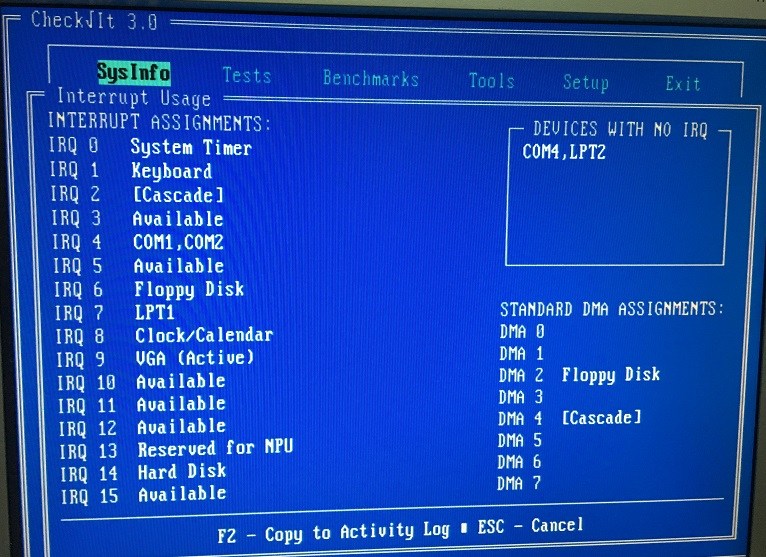
The most popular way to do this was, of course, through programs that could configure our hardware, assigning them free resources. We could then indicate to our game which resources we had assigned, or maybe the game could figure it out through environment variables. However, especially in the beginning, resources could only be modified by physically manipulating the card. This was done with jumpers that closed circuits on various contacts on the board, but in the early 80s, users often had to use a soldering iron or cutter to modify the card tracks. Fortunately, this was usually not the case in later PC times.
Which cards were the most sold or the most used in PC games? How did they work? Let’s look at the most common and interesting ones.
PCjr and Tandy 1000: SN76489
I’ve already written about this audio chip. Created by Texas Instruments in the early 80s, it was used in numerous systems throughout the decade and reached the PC through the PCjr in mid-1984, a (partially) IBM PC-compatible computer. More oriented towards the home market, it included an improved video mode, a chiclet keyboard, and a sound system featuring the SN76489. A few months later, the Tandy 1000 emerged, a clone of the PCjr with partial compatibility that tried to address both the original PC’s and the PCjr’s issues, while simultaneously introducing new incompatibilities with both.

This hardware had fairly modest capabilities: three square wave voices and one noise channel, resulting in mono output. Of course, compared to the PC Speaker sound, it was a significant improvement. The success of this sound addon was limited, as although the Tandy 1000 sold reasonably well, no other compatible PC included this chip, and no sound cards with it were sold.
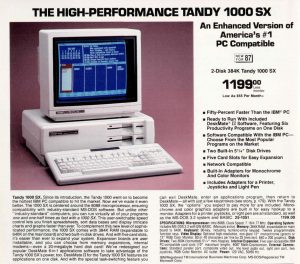
In both cases, this sound chip could be programmed by writing to address C0h, modifying its registers. This further contributed to its limited success, as from the IBM AT (1984, the third PC model after the PC and XT), that memory address was reserved for other purposes. Additionally, proper sound cards would soon appear, but it still received support for some interesting games, like King Quest (1984, Sierra On-Line) on the PCjr. As we will see, Roberta Williams’ games were always at the forefront of PC technologies.
In the early 90s, with the launch of IBM PS/1 line, a sound card with suspiciously similar capabilities to the PCjr and Tandy 1000 was introduced to the market. It was simply called PS1-Audio, and it also had three voices and a noise generator, with sound identical to that heard on the two aforementioned computers. Besides the unique SN sound, it seemed to have a DAC for digital sound and included a joystick/MIDI port. I am unaware of the quality of this digital audio, but by the time it took off, there were much more interesting alternatives.

This humble writer only knows of a handful of games that supported it, such as a special edition of Silpheed made by Sierra in 1990. Another was King Quest 4 by the same company and the same year. Both supported the three musical voices and the DAC for sound effects.
Roland MPU-401
Probably the first professional audio peripheral for PCs was the Midi Processing Unit 401, manufactured by Roland starting in 1984. It did not provide audio capabilities to the PC at all, “just” communications in the MIDI standard. Variants were made for almost all systems, such as the Commodore 64 or the MSX.
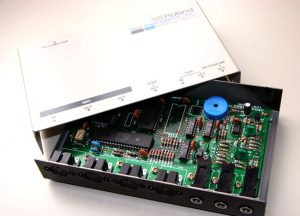
The MIDI (Musical Instrument Digital Interface) standard establishes a protocol for communicating with musical instruments, as well as a standard for connectors. It was created in 1983 by a committee at the proposal of the Japanese company Roland, and from then on, all instruments adhering to it could communicate and cooperate with each other. One device could serve as a sequencer, another as a synthesizer, a third as a drum machine, and so on. The fact that a computer complied with this standard allowed it to be used as a workstation, and it is often cited as the reason the Atari ST succeeded in the professional music production world for many years.

Returning to the MPU-401 and the PC, there were several variants, each with slightly different capabilities, and some even had additional hardware with popular MIDI synthesizers. It basically consisted of an expansion card with a large connector to which one had to plug in an external box with most of the hardware. In this box, you could find MIDI IN, OUT, and THRU connectors, allowing you to plug in any instrument or device that complied with the MIDI standard. It also had a metronome connector and a tape sync connector.
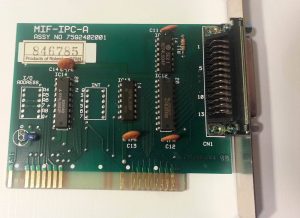
There were two operating modes for this device: normal and UART (serial connection). The normal mode (also called intelligent mode) provided eight MIDI tracks, a metronome, and tape synchronization. The UART mode was just a MIDI connection, and it was supported by most clones and similar hardware. Intelligent mode fell out of use within a few years as it was easier to implement its functions with the PC itself.
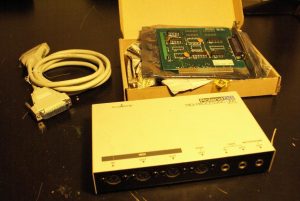
This hardware alone was not very useful, as it only controlled other devices. If you had a synthesizer module or similar, however, you could achieve sound as good as your device could provide. The UART mode was widely supported by games as it was relatively simple. Just writing to port 330h (300h in some cases) with the notes was enough, and it would handle receiving them from whatever you had connected. As we will see, there were some truly remarkable gadgets that could use this interface.
Covox Speech Thing and Variants
In 1986, a very simple device appeared that allowed the PC to play 8-bit digital audio, and it was as easy to install as plugging it into the printer port.
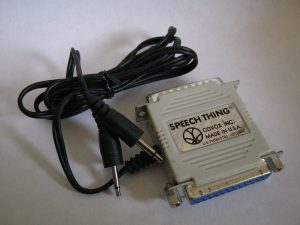
The operation of this device was really simple, consisting merely of a ladder of resistors of increasing value for the eight digital outputs of the printer port. To achieve cleaner sound, some variants used electrolytic capacitors. Needless to say, although it wasn’t expensive hardware (about $80), almost immediately very cheap clones appeared, and one could even build it with a bit of soldering and skill.

Its greatest virtue was also its greatest flaw. Being a completely passive device, everything was under the control of the CPU. The 8-bit sound output could have any frequency you wanted, although the architecture of the printer ports made it difficult to achieve CD quality at 44.1 kHz. Additionally, the technique required to operate it consumed a lot of CPU time, as this device had no access to memory or any kind of buffer. It was necessary to constantly write values to the printer port, and both this and the control of intervals had to be done “manually” by your program.
One of the most popular variants was the Disney Sound Source, released by the ubiquitous Mickey Mouse company in the early ’90s. Externally, it was distinguished by having its own speaker, powered by batteries, but inside it had a fundamental difference: a small buffer memory that made it much easier to program and required much less control from the CPU. In exchange, the sound had to have a fixed sample rate that could not be adjusted.

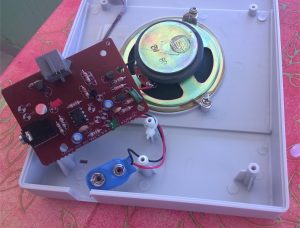
The Covox did not gain much acceptance, although again, games from Digital Illusions CE offered quite good support, as did the trackers discussed in the PC-Speaker section. The Disney Sound Source had better luck, receiving more support from game developers, starting with Roberta Williams‘ productions. There was also a software emulator of the SN76489, which, if you had a decent CPU, provided PCjr (or Tandy 1000) audio to some games. However, it had poor compatibility, and not many games could use it easily.
AdLib
Everything seen so far didn’t resemble a sound card as we know it, but the Canadian AdLib Inc. launched a successful sound card in 1987, the AdLib Music Synthesizer Card, simply known as AdLib. With it, the concept of a sound card for home use was born.
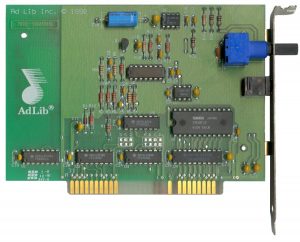
This card provided FM audio synthesis through Yamaha OPL2 chip, but no digital sound. It offered nine voices, each with its ADSR envelope with various waveforms and operators. FM audio synthesis is a bit more complex than a simple programmable sound generator because it involves several waves whose frequencies modulate the sound of the main wave, which can take various forms: square, sine, triangle, sawtooth, and more. Indeed, it is as complicated as it sounds, and crafting a nice sound is quite a challenge.
And diving into technicalities, ADSR may seem like a complicated acronym but it just stands for “attack-decay-sustain-release.” These are four parameters that define the volume of an instrument in its fundamental phases, also known as the envelope: the attack (the start of the note), both before and after it is played, the volume while holding it, and how long it takes to fade out. It’s abstract to explain it in words; a graph explains it much better.
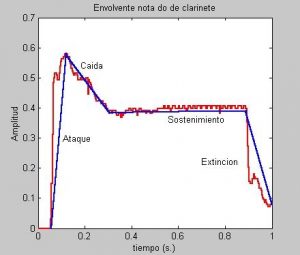
The card was well received and was widely supported in most PC games, establishing itself as the first major standard for most home applications. It was supported throughout the life of MS-DOS, and even some Windows games (mainly 3.X) made use of it. However, sales did not keep up in the ’90s, as almost all subsequent cards and clones used the same Yamaha chip and were either cheaper or added more features.
Certainly, the audio synthesis capabilities of this AdLib, which was little more than a wrapper for the OPL2, were much richer and more than notable for 1987. PC games could feature music similar to famous Yamaha synthesizers at a very competitive price, around $130. However, with the popularization of middlewares, the quality of music for AdLib games declined, as most of the times, the card was simply used to play General MIDI instruments with a sound bank provided by the middleware programmer. Since it didn’t have digital sound, this technique was quick but produced poor results.
What was that General MIDI about? Essentially, it’s an additional standard to the MIDI protocol that requires up to 24 simultaneous voices and 128 defined instruments. It emerged from 1991 onwards, and since then, most MIDI-capable audio synthesizers and sound cards complied with this specification.
In 1992, the company marketed a second model, the AdLib Gold 1000. Instead of the OPL2 chip, it featured the improved OPL3, which allowed for more simultaneous voices and more ways to create different sounds, in addition to including a 12-bit DAC. Unfortunately, it fell victim to the success of its smaller sibling and didn’t sell well. It received support from some notable games like Dune (Cryo, 1991), but it ultimately led to the manufacturer’s bankruptcy.
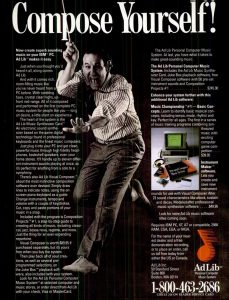
Roland MT-32
One of my absolute favorites, and of many video game enthusiasts. The Roland MT-32 Multi-Timbre Sound Module, simply known as the MT-32, was launched as an affordable MIDI synthesizer for amateur musicians but quickly gained great popularity among PC gamers. It could only be used via MIDI connections, so an MPU-401 interface or hardware with that functionality was required.
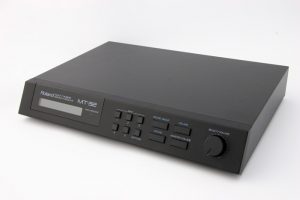
The MT-32 operated on a principle called LA, or linear arithmetic. It combined digital samples of instruments (recorded instruments) with subtractive audio synthesis, achieving high-quality voices without spending thousands of dollars on ROM cartridges and expensive sound samplers. Its memory contained many partial samples of instruments which, combined with synthetic sound, filters, and DSP, created a bank of 128 instruments and 30 sound and drum sounds. This device was not exclusive to the PC; it could be used with any system with a MIDI connection, such as Sharp X68000 computer.
This device was not compatible with the General MIDI standard, which did not appear until four years later, so Roland provided partial compatibility by selling an add-on. However, its use in games was mostly limited to its base equipment, which cost around $700, to which the MIDI interface, typically an MPU-401 starting at $550, had to be added. As a musical instrument, it was very competitive, but as an audio solution for games, it was very expensive.
Its price was the reason why, when cheaper wavetable-based systems (essentially banks of digital instrument samples) appeared, it fell out of use, though not before leaving us with some of the highest-quality PC soundtracks. Again, Sierra On-Line was a pioneer in its use, with games like King Quest IV in 1988. In the early ’90s, the best soundtracks were composed for this device: Monkey Island 2 (LucasArts, 1991), Dune II (Westwood Studios, 1992), and many others.
This audio system lacked digitized sound, but most games allowed the simultaneous use of a sound card with this capability, so a player with a plump wallet could enjoy both digital sound and the best music at the same time.
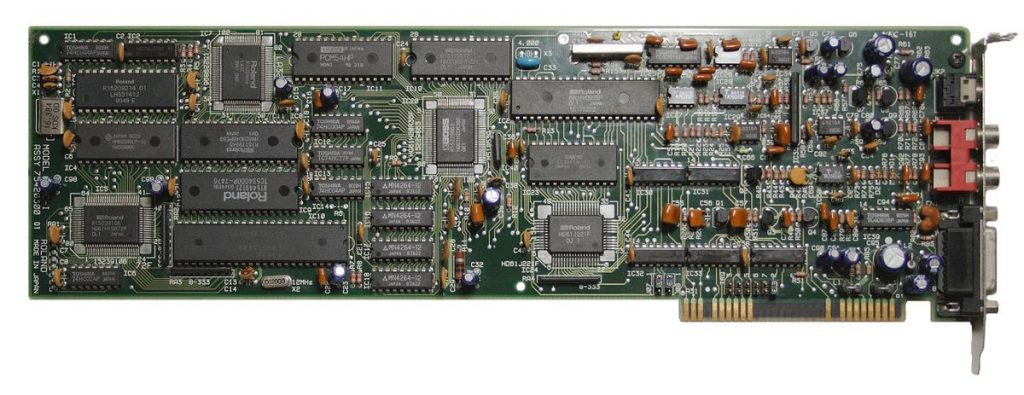
Over the years, this device took different forms, such as the 1989 LAPC-I. Instead of a MIDI module, it was an expansion card that combined the features of an MPU-401 interface and the MT-32, making very similar sound but being much more convenient.
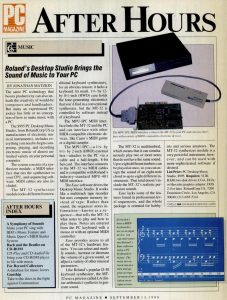
Other varied stuff
By the late 80s, there was a wide range of sound cards with different features, prices, and lifespans. I’ve tried to detail the most notable ones, but it’s worth mentioning that there were others that didn’t sell much.

One of these cards was the first created by IBM. The only one, if we don’t count the PS/1 card, which was more of an expansion for that system. This is the IBM Music Feature Card, produced in 1987 with a design similar to the LAPC-I: a MIDI interface with a synthesizer, this time the Yamaha YM2164, used in some synthesizers of the time. It cost $500 and wasn’t much better than an AdLib. It was aimed at the semi-professional market but didn’t fit into any specific sector and was overshadowed by the competition.
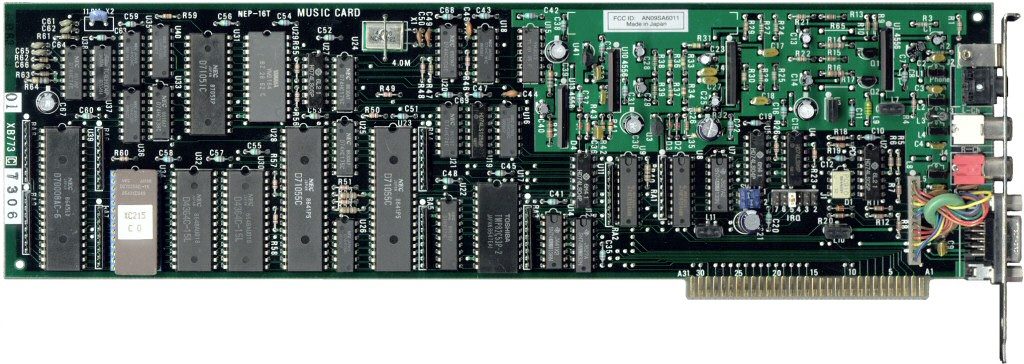
That same year, Creative Technology Limited (known as Creative Labs in the U.S.) began marketing its first sound card: the Creative Music System. It essentially consisted of two Philips SAA1099 chips, with features similar to but superior to the SN76489: these programmable sound generators provided the PC with 12 stereo voices, four of which could be used as noise generators. The popular chain RadioShack sold it as Game Blaster a year later, and although its audio chip was supported by a number of games, the card was quickly overshadowed by the company’s subsequent creations.
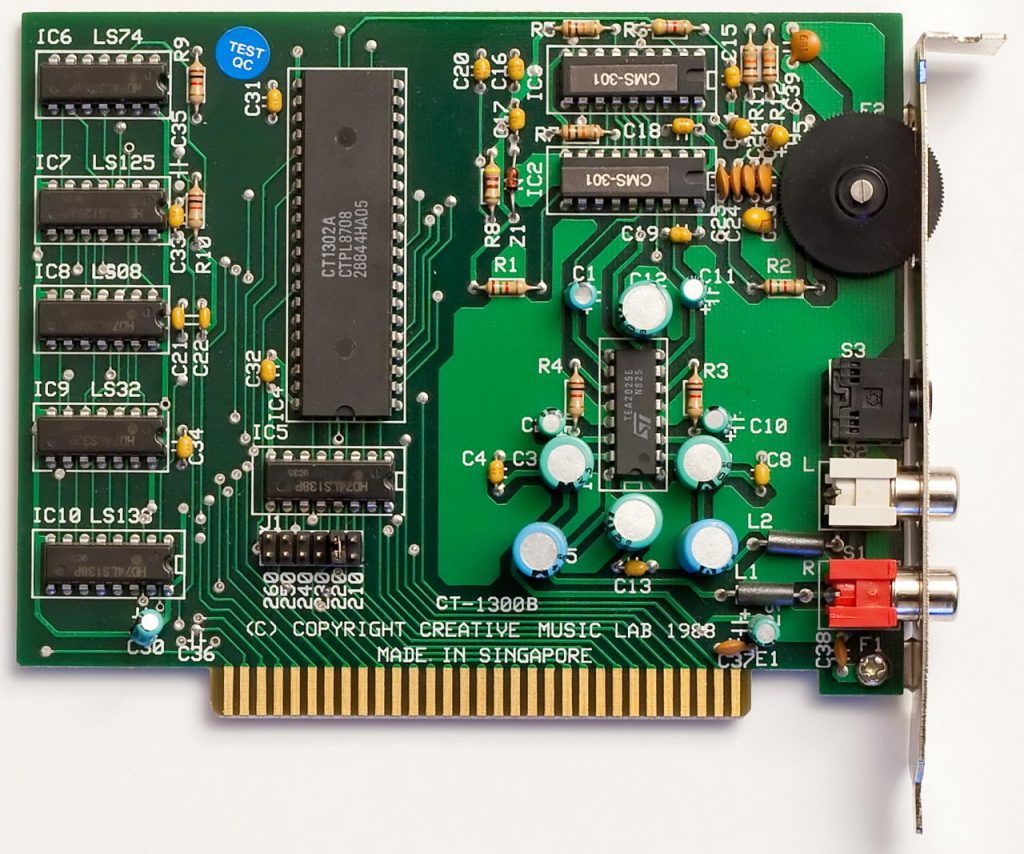
In 1989, a company called Innovation Computer Corporation developed something that seemed like a good idea on paper. The SSI 2001 was a sound card that included the already established SID chip from the Commodore 64. The demoscene for this computer was popular, but there were much better products available for the PC, and it only received support from a handful of games. At least it included a game port to connect a joystick.
Finally, Sound Blaster
The most successful creation of Creative, and by far the most popular line of home sound cards of the time, is undoubtedly the Sound Blaster. Almost all games included support for this card, whose first version dates back to 1989. The reasons for its success were a timely release and features completely focused on computer games. Furthermore, since compatibility with the AdLib was perfect, there was no reason not to choose the Sound Blaster.
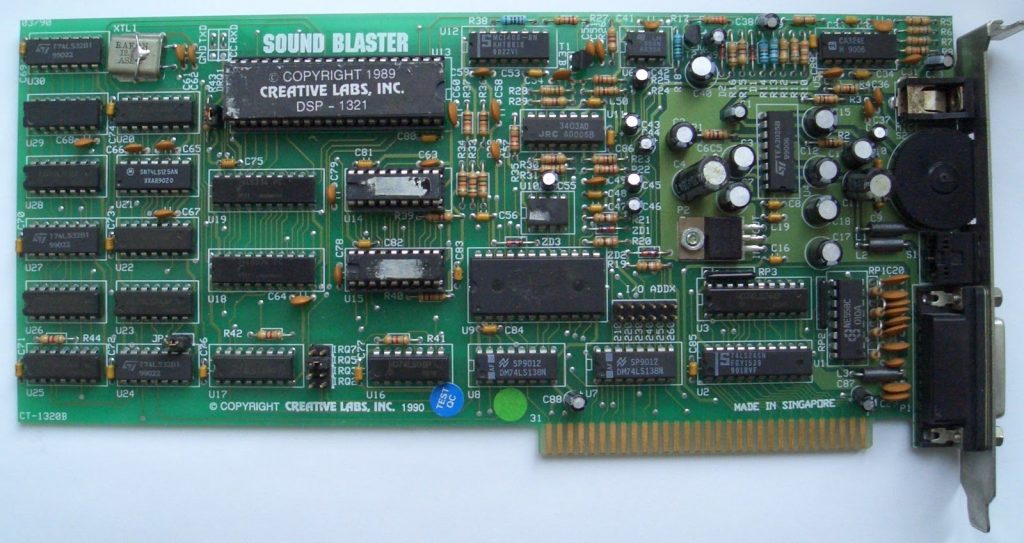
The Sound Blaster, later known as 1.0, was capable of reproducing 8-bit sampled mono digital sound (PCM and ADPCM) up to 22 kHz. Additionally, it could record 8-bit mono sound up to 11 kHz. It was also backward compatible with the Game Blaster, allowing it to use its SAA1099 chips to play music, but this feature was little used since it was also compatible with the AdLib, having an OPL2 chip as well. This all-in-one card became the best-selling expansion card for PCs within a year. It also included a game port and MIDI.
A year later, to cut costs, the card began to be sold without the SAA1099 chips, although it retained the sockets if you wanted to add them later. This version later became known as 1.5.
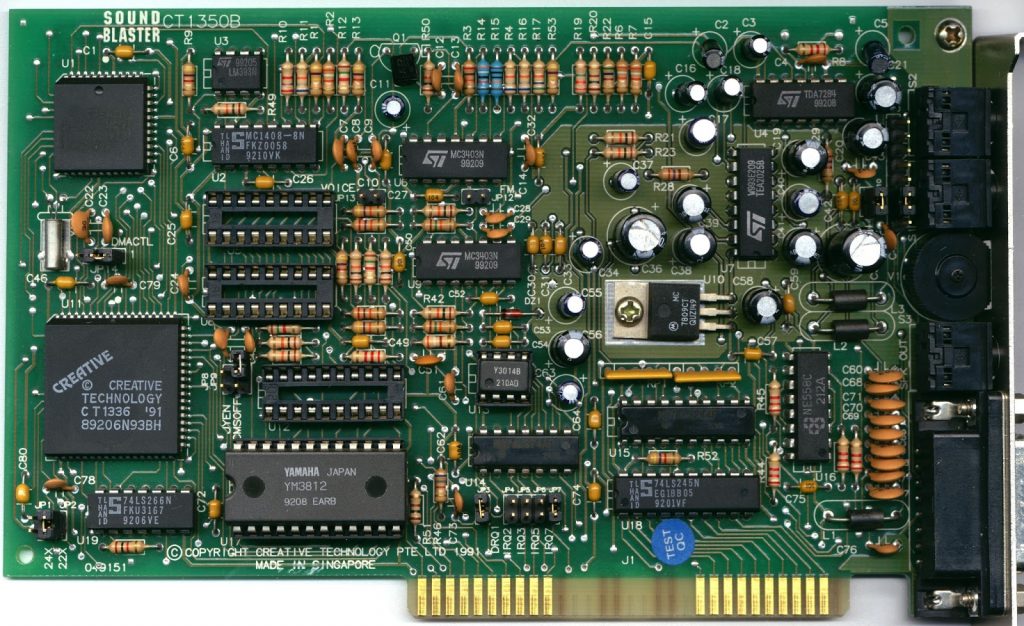
Soon after, the third revision appeared: Sound Blaster 2.0, in 1991. The sound quality increased to 44 kHz, the MIDI port was now full-duplex (could transmit and receive simultaneously), and the DMA now supported the “auto-init” extension, allowing it to be fully compatible with Windows 3.X.
Why did Sound Blaster succeed in the gaming sound card market? One reason is the use of DMA, Direct Memory Access. In most home hardware devices, it was necessary to use the CPU synchronously with the audio device, sending the information at the precise moment, wasting valuable CPU time. Thanks to DMA, we can tell the audio card where in memory the sound to be played is, and it will handle fetching it as needed. Naturally, under the CPU’s watchful eye, but now it can focus on other than sending data to the audio card.

In 1991, a different model from the previous ones was launched: the Sound Blaster Pro. The maximum audio output sampling rate was increased to 44 kHz in mono (22 kHz in stereo), and a second OPL2 chip was added, doubling the voices and providing stereo sound. Additionally, this card came with a very welcome addition: a Matsushita CD-ROM controller.
It wasn’t long before a second revision replaced the it, changing the pair of OPL2 chips for an improved OPL3. Moreover, it was now possible to buy the card with a CD-ROM controller for other standards, such as Sony or Mitsumi. This card was one of the most cloned of the time, and some semi-professional sound cards included a software emulator to use them in games.
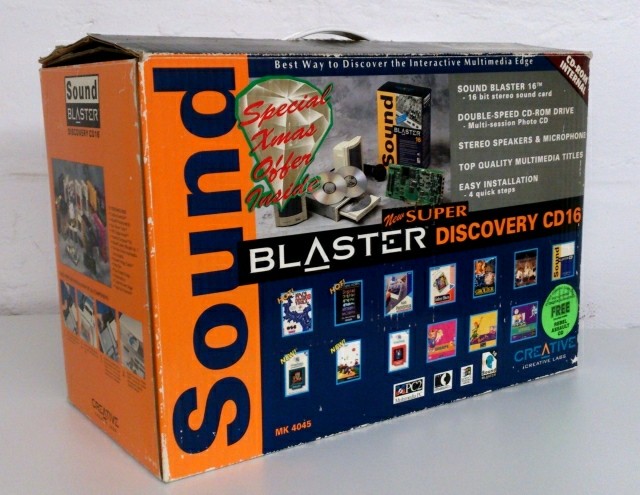
What is the fuss about this CD-ROM controller thing? Before the ATAPI standard became popular in PCs, there were different standards for CD-ROM drives. Even then, this standard coexisted with SCSI, which was more professional, so an extra controller card was often needed if you wanted to have a CD-ROM drive. The fact that this controller was integrated into our sound card was a very important factor, but it had to be the right one for our CD-ROM drive. Any of these drives could read any disc, though.
In June 1992 it came what many considered the ultimate sound card for gaming: the Sound Blaster 16. With all the features of the Sound Blaster Pro 2.0, but additionally its MIDI interface was now fully compatible with the MPU-401 UART. It was possible to purchase a daughter card to provide wavetable capabilities, but this was not a very common feature in games. Nonetheless, the standout feature of this product was something else: CD-quality (44.1 kHz at 16 bit) playback and recording! This was a different world.
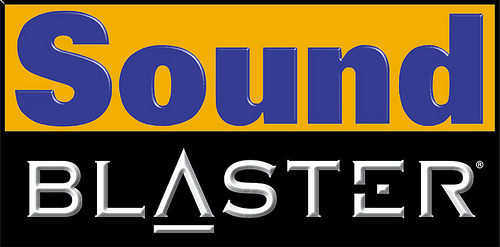
The revisions of the Sound Blaster 16 didn’t add or remove anything, given the immense popularity of this sound card. Only its form factor was redesigned to integrate it into a motherboard or for the OEM market, taking the name ViBRA 16. It was never fully backward compatible with the Sound Blaster Pro in terms of digital sound, but it was in its FM synthesizer. Nevertheless, almost all programs from 1992 onwards supported both.
Sound Blaster 16, with just its name it sold Creative’s ad and its Sound Blaster line
Windows Sound System
It was practically impossible to compete with the Sound Blaster, as they had become the de facto standard. There was barely any room for innovation, and developing a different standard was suicidal because no one would support it. Microsoft created a specification with this name in 1992, so anyone could build a sound card compatible with Windows 3.X and with any program that used the standard.
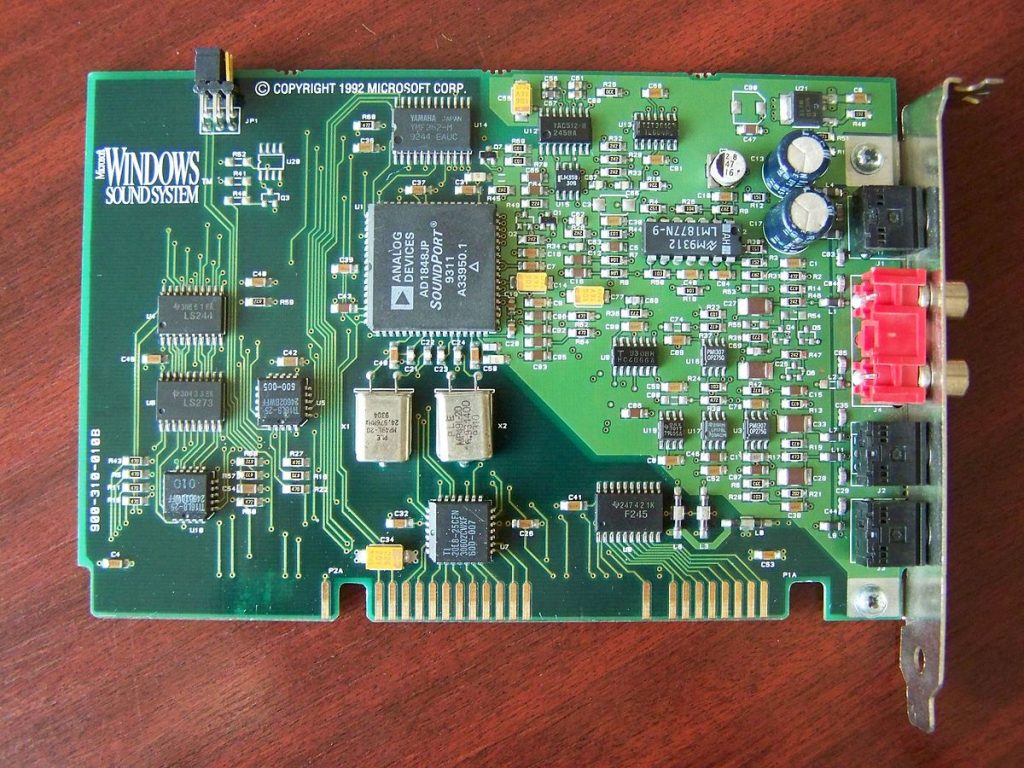
There were several levels of this specification, and the first and most used required a sound quality of 48 kHz at 16 bit, and an OPL3 for musical synthesis. The Sound Blaster Pro met this specification, but curiously the Sound Blaster 16 did not. Any card that adhered to the WSS standard, no matter how basic, could be used in Windows and also emulate a Sound Blaster Pro. Although many games supported this standard in MS-DOS, some major developers, such as Apogee, did not include it in their games. It was also not supported by id Software, so it missed out on the essential Doom (1993).
This standard became completely obsolete in 1997 with the introduction of Intel AC97, primarily designed for Windows. It never had support for MS-DOS, although by then almost all developers had already focused on Windows 95.
Gravis Ultrasound
The case of the GUS is interesting. When in 1992 everyone was buying the Sound Blaster, this Canadian company began selling this card along with the Gravis Gamepad, a PC game controller inspired by the Super Nintendo’s. The reason was to offer a card with a more professional design at a bargain price.
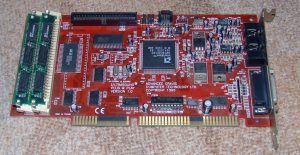
This card didn’t have a simple DAC like the Sound Blaster, nor did it include any FM audio synthesis chip. Instead, its hardware was a digital sample synthesis engine, very similar if not identical to the wavetable concept. It had dedicated RAM where sounds and instruments were loaded, and with its mixer it could play up to 32 sounds (up to 14 in CD quality). The playback quality was the same as the Sound Blaster 16, 44 kHz and 16 bit in stereo. However, for recording, an additional daughter board was required.
Different revisions of this card provided more or less RAM, usually upgradeable with 30-pin SIMM modules. Others added a CD-ROM controller or hardware mixing and CD-quality recording without needing a daughter board. One revision, the Gravis Ultrasound ACE, removed all the extras and was marketed as a card to be used alongside the Sound Blaster.
Its operation made Amiga software relatively easy to port to the PC, as the handling was similar, with the advantage of dedicated RAM. The aforementioned trackers and the demoscene also enthusiastically embraced the benefits of the GUS, as it allowed real-time music production without having to invest in a powerful CPU.
The case of games was complicated. Some of the major releases, like Doom (id Software, 1993), provided native support from the start, but not all developers jumped on board. It didn’t help that it didn’t even have an OPL chip, and even less that it didn’t come with a factory MIDI interface. Additionally, as expected, no game released before autumn 1992 supported this card. None of this was a problem for music production, but how was its gaming use maximized?
The answer lay in the Gravis Ultrasound ability to imitate or emulate other sound cards. More or less directly, it could emulate a General MIDI device using a preset sound bank, as well as mimic the instruments of an MT-32. This itself provided musical support for most games of the time, but the digital sound question remained unresolved. Some patches appeared for existing games or those released without Gravis support, but we depended on magazines including them with their CDs or having internet access, which was very rare before 1994. The answer came (more or less) with the use of emulators.

IWSBOS and MegaEM were the two programs most used by Gravis users. These allowed emulation of a Sound Blaster 2.0 and an AdLib, significantly increasing the number of games that could use it. This was by no means a complete solution, and it depended on whether a game used a protected mode, required EMS memory, needed a lot of conventional memory… all of this was also a lottery as compatibility was hit or miss. Only the Gravis Ultrasound Extreme, from 1996, provided hardware support for Sound Blaster Pro emulation, albeit a bit late.

In any case, Gravis Ultrasound provided excellent hardware for amateur musicians, costing only slightly more than a Sound Blaster. Although support for games was irregular, it was a way to stand out from the common path. Its onboard memory allowed for much more sound variety than MIDI modules, and being able to use it as a General MIDI device with sounds loaded by us gave games a musical quality that the Sound Blaster could only dream of without its Wave Blaster daughterboard.
Sound Blaster AWE32, and we are just getting started
The Sound Blaster 16 was undeniably the flagship sound card for 1994, but its features beyond digital stereo sound were quite stagnant. Creative Labs took the step with the AWE32, introducing many improvements in musical capability, such as dedicated RAM, a 32-voice wavetable processor, a hardware mixer with an integrated equalizer, and a digital effects processor. The price, however, was in line with all that was offered.
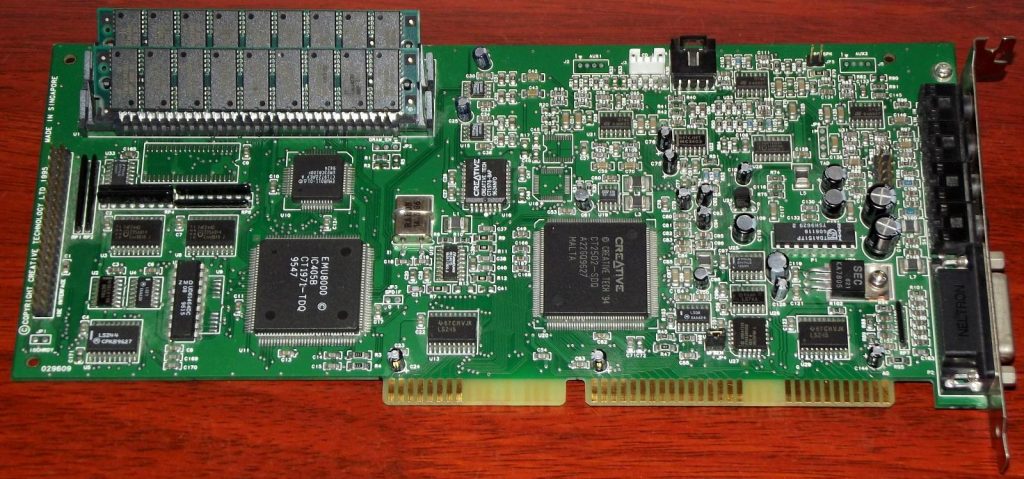
It goes without saying that it was perfectly compatible with the digital sound of the Sound Blaster 16, and as it also included the OPL3 chip, it was compatible with FM audio synthesis of both the Sound Blaster and the AdLib. In some cheaper models, however, they decided to integrate it into their processor or simply not include it and provide support through emulation. The sound in this case wasn’t 100% the same, but it maintained compatibility. For all these reasons, from its release, these cards reestablished themselves as the standard for home use, especially gaming. For old games, their retro-compatible features could be used, and new ones began to support it right away.
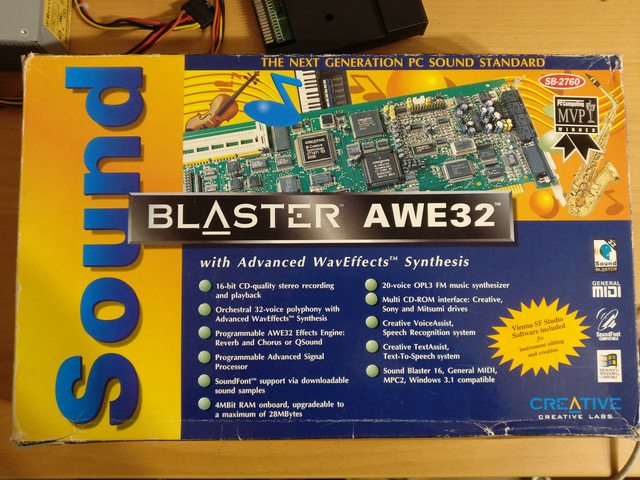
For a PC gamer, this card combined all the desirable features: it worked with all games, and the music sounded much better than a Sound Blaster 16, with full MPU-401 UART support. Additionally, it was a direct challenge to the Gravis Ultrasound, as it entered their territory thanks to the EMU8000 chip. It provided 32-voice wavetable synthesis using its dedicated RAM, which could be expanded in some models to an incredible (and expensive) 32 megabytes. Curiously enough, popular trackers did not provide direct support for this amazing hardware (but they did through Sound Blaster compatibility, of course), only some specialized players did.
Games that supported the AWE32 directly offered great sound. Not only for its CD-quality digital sound or its General MIDI-compatible music, but also for its digital effects like reverb or flange. Additionally, since we could load instruments into memory using the SoundFont format, not all games had to sound the same. There weren’t many games that took advantage of this card however, and most were limited to using the digital sound inherited from the Sound Blaster 16 and playing General MIDI music from its preset sound bank.
Although most revisions of the AWE32 involved changing or removing things (like the factory-installed memory, as in the Sound Blaster 32), in 1996 another model was released that went beyond a simple revision: the Sound Blaster AWE64. The improvements included cleaner sound due to a higher signal-to-noise ratio, and a significant increase in polyphony (to 64 voices). The hardware was an extension of what was seen before, so compatibility was more than assured.
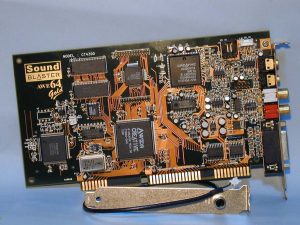
The AWE64 revisions were interesting. The Gold version brought us closer to the professional realm by including a 20-bit professional DAC, as well as RCA connectors plated in gold and a digital S/PDIF output. The Value revision, on the other hand, was limited to domestic and gaming use at a very competitive price, and although there was practically no support for AWE64 in games, it was a more than affordable way to play games that supported AWE32 and compatible cards, though without the possibility of expanding RAM. In any case, this became more difficult with the AWE64 as it moved from standard 30-pin SIMM support to Creative’s proprietary memory, which was more expensive and harder to find. Money talks.
Professional cards: Turtle Beach
The PC audio card market was not limited to games and home applications. Although by the late 80s and well into the 90s, the old Atari ST remained the king of music studios (with the Macintosh trailing behind), PCs also became a viable platform for professional audio production. One of the most well-known companies was Turtle Beach, with a line of professional cards that started selling in 1991.
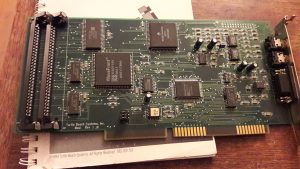
Turtle Beach’s flagship product in the MS-DOS era was the Multisound. The sound quality of this card was on another level, aimed squarely at professional use. Its heart was a professional E-MU synthesizer with up to 4 MB of ROM, with studio-quality 24-bit recording capability and digital sound inputs and outputs, all in 1991, when the Sound Blaster struggled to achieve 22 kHz mono sound at 8-bit. Even with the advent of the AWE32 in 1994, they remained competitive, costing not much more than these at that time (around $400).
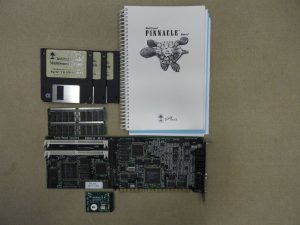
Naturally, the applications for this card were very specialized, working only with specific software. They were not at all compatible with the de facto standard, which was Sound Blaster, not even with MPU-401. The only way to use them with MS-DOS era games was through Windows NT, and only with an emulator like VDMsound, something completely inadvisable and beyond the scope of this article. (Moreover, this happened much later)
Other General MIDI modules and cards
While everyone was very pleased with the Sound Blaster, their musical quality in games left much to be desired for the 1990s. The solution was to have an MT-32, of course, but that required a significant investment. Moreover, since it did not comply with the General MIDI standard, not all games could use it properly or at all.
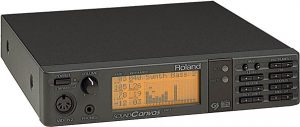
The first notable device in this field arrived in 1991 and was the Roland SC-55 (Sound Canvas), a MIDI synthesizer module that adhered to General MIDI and Roland’s new proprietary standard, General Standard, a name that apparently involved quite a bit of brainstorming. The merits of this device were notable: it was not only compatible with General MIDI, making many games of the time work, but it also emulated the MT-32 with its basic sound bank. It didn’t sound exactly the same, but it maintained high quality in its instruments and was perceived as a fairly good substitute. A popular form factor for PCs was the Roland SCC-1, which was an internal card rather than a MIDI module and already included MPU-401 functionality.
Not many games supported it directly, although its compatibility with the musical standards of the time made it work reasonably well with programs that were not specifically designed for it. However, in 1993, the very game Doom by id Software not only provided specific support but also had its brilliant metal soundtrack designed to be played on this device.
Where was Yamaha? Possibly working on its XG standard, eXtended General MIDI. In 1994, the first module conforming to this standard was released, the MU80 Tone Generator. Superior to the Sound Canvas and allowing much more modulation variety for instruments, it was sold over the years as either a MIDI module or included in audio cards with digital sound capability. However, we entered the murky territory of the PCI bus, which was more modern but practically incompatible with all previous cards that used the ISA bus. For many years, various versions of Windows used an emulator of this standard to provide MIDI sound to their operating system without the need for musical synthesis hardware.
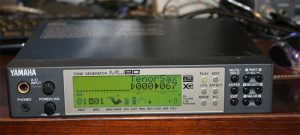
MS-DOS games did not bother to provide direct support for XG cards and modules, so they had to be used simply as a General MIDI module controlled by an MPU-401 or compatible. The result was a fairly good sound but completely underutilized the ingenious capabilities of this hardware.
One more thing (other interesting cards)
Competing in the era of the Sound Blaster was more difficult than gargling with talcum powder. However, with the rise of middlewares and Windows 3.X software, it was somewhat possible to offer alternative cards.
Pro Audio Spectrum
This family of cards made by Mediavision started in 1991 with the original PAS. They offered AdLib compatibility by including a pair of OPL2 chips in their configuration, as well as audio that was completely incompatible with the Sound Blaster “standard.” It also included a CD-ROM controller, with models available for different standards. Its sound was 8-bit, and it didn’t catch on, lasting only a year before being replaced by its successor.
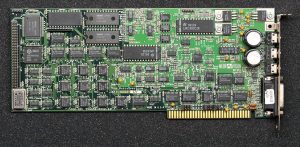
Today, it is a hard-to-find card with little literature available, though it had moderate support in games as the driver used it similarly. There was a revision that used a 16-bit ISA port, replacing the FM synthesis part with an OPL3 chip, and was able to play 16-bit sound. It was known as the Pro Audio Spectrum Plus. Both cards could also emulate the MPU-401 module in their joystick connector.

The following year saw the release of the Pro Audio Spectrum 16, which is more common today and has interesting features: 16-bit stereo digital sound in CD quality, similar to what the Sound Blaster 16 offered that same year. For game enthusiasts who didn’t want to miss anything, it included full hardware compatibility with the Sound Blaster 1.5, so it could now be used with virtually all games on the market, albeit with inferior sound quality if PAS16 support was not included. These features allowed it to sell moderately well and gain support for most games that used a major middleware.
Thunder Board
In addition to the Pro Audio Spectrum, Mediavision marketed another card unrelated to the PAS. What reason could there be to risk it twice in this market? Well, not entirely: Thunder Board is a clone of the Sound Blaster 1.5 but at a student price.
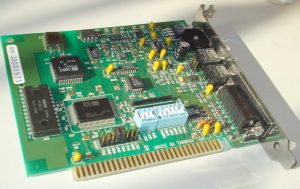
With it, you could do the same as with Creative’s product for much less money, and although better cards existed in 1992, the Thunder Board stood out as an alternative for those short on cash. In fact, in the midst of the saving frenzy, they came up with a very unique product: the Thunder and Lightning, which did not include improvements in its sound circuits. Instead, it included… a SuperVGA graphics card!

It’s true that building a PC was cheaper thanks to these devices, but one wonders if it’s a good idea to bring audio and video circuits so close together. More information could not be found.
Soundman Wave
In the amateur production market, we already had the Gravis Ultrasound, and a year later, this creation by Logitech appeared. A product straddling game-oriented hardware and sound aimed at small home studios. Its features were quite good for 1993: CD-quality sound both in playback and recording, CD-ROM controller, and something very interesting: an OPL4 chip instead of the common OPL3. Besides the FM synthesis features present in almost all cards, it had wavetable capabilities, with its bank located in a 2-megabyte ROM.
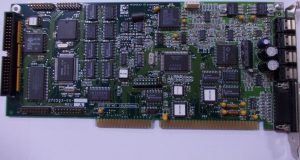
This card had, however, two problems. First, although it was compatible with the Sound Blaster Pro, it was very unreliable. Either it sounded too sharp, or one of the channels didn’t work, or it didn’t sound at all. In the end, despite the manufacturer’s claims, it had to rely on Sound Blaster 1.5 compatibility, and native game support was very limited. The second problem is even more painful: without onboard RAM, the wavetable sound was limited to the banks provided by its otherwise “huge” ROM.

The End of the MS-DOS Golden Age
MS-DOS and its derivatives (PC-DOS, DR-DOS, 4DOS, etc.) began as a sui generis interpretation of CP/M and remained terribly outdated for most of their active time. Only the omnipresence of the PC architecture, the amount of available software and hardware, and the ease of commercializing clone PCs allowed it to last so long. But the second half of the 1990s saw its reign fall, and with it, the way we understood sound cards.
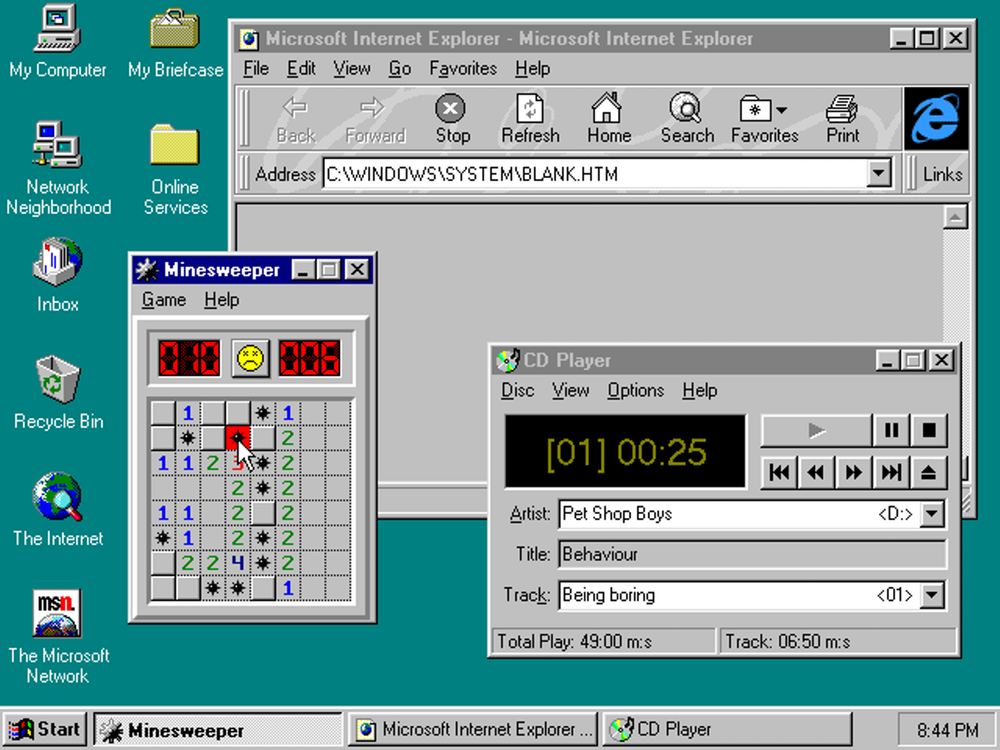
With the arrival of Windows 95, developers finally began to abandon MS-DOS, and thanks to its driver model, it was possible to use practically any sound card in all programs. With no need for a program to provide specific support, the tables turned. Additionally, the ISA bus was gradually replaced by PCI, and the fact that games could only handle the former created a significant schism in audio card technology.
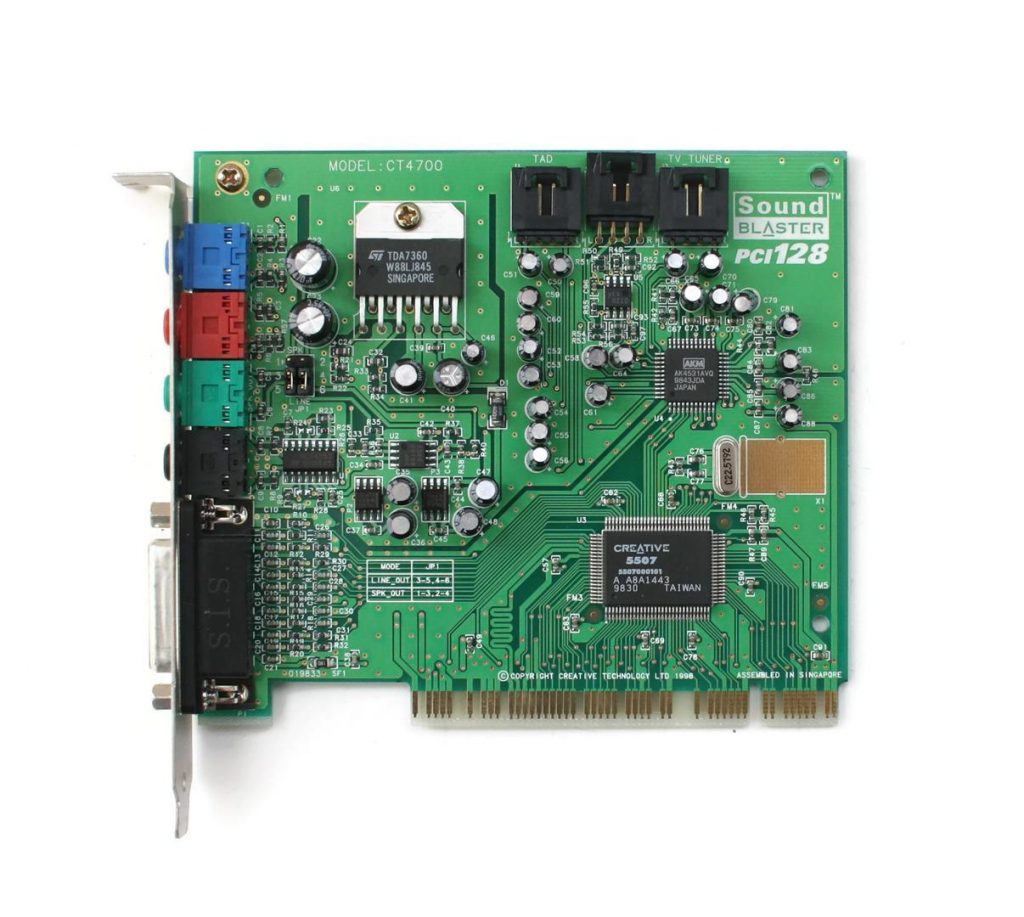
The ISA bus was present from the first wave of PCs, and with it, it was possible to write to memory or use the computer’s resources via software interrupts or discrete channels. With PCI, the model shifted to a bus arbitrator, more advanced technologically but completely different, and support was practically limited to Windows systems or, at most and for a while, a driver that provided ISA compatibility for MS-DOS-designed games. Since Windows 98 eventually included software compatibility with Sound Blaster, it was possible to use almost any sound card, thus delivering the final blow to Creative’s hegemony.
After the Long Read
Given the (very) relative success of my article on the most important sound chips in video games, I decided to create one focused on the MS-DOS era. It evokes less easy nostalgia, among other things because there are no Nintendo games or similar, and sometimes handling and configuring these machines was a real pain in the back.
The claim of brevity was naturally a joke. Books could be written just about the AdLib, and I could have extended the history of the PC until I was exhausted. I have tried, however, to condense the most important aspects of the world of sound cards without leaving techniques and technicalities unexplained. I limited myself to the MS-DOS era, both because it interests me the most and because it was a time with a unique idiosyncrasy that, fortunately or unfortunately, I lived through.


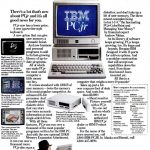

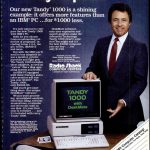

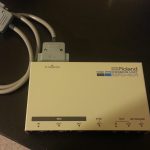



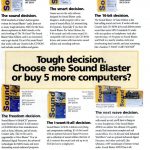


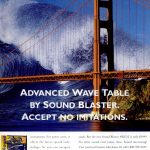



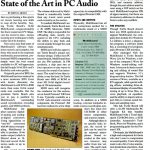

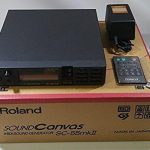
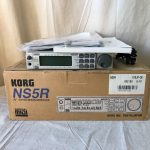

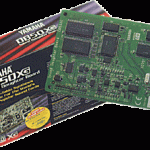
Please note this article was partially translated by an AI, so your mileage may vary. Feel free to notify errors or weird translations.